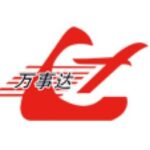After some fluctuations at the beginning of the year, quotations in the spot iron ore market has stabilized. In the last three to four weeks the market has experienced slow growth. The cost of 63.5 percent Indian concentrate in China in early April reached $138 per ton CFR.
According to many analysts, in the future, the ore may reach up to $140 / t CFR. China's continued high steel output, while the internal rental rates have generally stabilized. Stocks of iron ore at Chinese ports during the second half of March fell below $ 67 million tons, which is more than 20% less than in January. As the traders, Chinese steel companies are increasingly interested in the procurement of raw materials, and if in the second quarter of the national steel market will finally begin to rise, and raw materials will rise.
However, if the short-term Outlook for iron ore looks quite favorable, the medium - and long-term cause more troubles from the manufacturers. The Outlook for the global iron ore market, prepared by us investment Bank Goldman Sachs and published in late March, producers immersed in a deep reverie.
Now the global iron ore market is relatively balanced, but in the future supply will exceed demand. This year, the leading iron ore companies can increase supply by 100 million tons, and by 2017, according to Goldman Sachs, the global market will be 560 million tons of new capacity. Turnover of international transoceanic trade in iron ore will rise from 1.15 billion tonnes this year to about 1.5 billion tons in 2015 Tom. The lion's share of the increase will be in the "big three" global iron ore companies in the Vale, Rio Tinto and BHP Billiton, as well as the third largest Australian producer Fortescue Metals Group (FMG).
At the same time, the demand for ore increases much more slowly than supply. According to forecasts of the Chinese National Commission for reform and development (NRDC), in 2013 the country will have produced 746 million tons of steel, which will require 1.14 billion tonnes of iron ore, equivalent to 62% concentrate. Of these, 770 million tons will come from import, the volume of which thus increases by less than 30 million tons compared to last year.
Of course, there is India, which is rapidly transformed from the third largest exporter of iron ore, once supplied to the world market more than 100 million tons of raw materials per year, to a net importer. However, according to experts, in 2013-2014, the production of iron ore in India stabiliziruemost, so that this country will cease to have an impact on the global market.
In principle, the leading exporters of iron ore are fully aware that their actions will cause overproduction and falling prices. However, they believe that with their minimum component cost about $20-30 per ton from Rio Tinto and BHP Billiton, and $50 per ton from FMG, they will be able to survive any recession and even increase their market share at the expense of the losers. But Goldman Sachs experts draw attention to the fact that the Chinese iron ore company, which, according to the calculations of the Australian suppliers, was to become the first victims of the crisis, as the times will stay the longest. The fact is that the Chinese government, obviously, will support domestic producers, to preserve jobs and to increase the dependence of metallurgists from the import of raw materials.
No matter how low the prices on the world market, most Chinese companies will continue to mine iron ore, I believe in Goldman Sachs. As a result, excess supply on the world market will continue to grow, reaching 344 million tons in 2017, and prices will fall to about $80 per MT FOB Australia.
Of course, all this will happen, figuratively, not tomorrow. The FMG leadership, in particular, believe that in the second half of 2013, spot prices for iron ore falls below $120-130 per ton FOB. But the prospect of drawn by experts of Goldman Sachs, apparently, forced iron ore producers to think about their future. It is likely that in the near future will be declared to suspend or postpone to a later date the implementation of a number of iron ore projects primarily in Africa.
Victor Tarnavsky
Rusmet.ru
